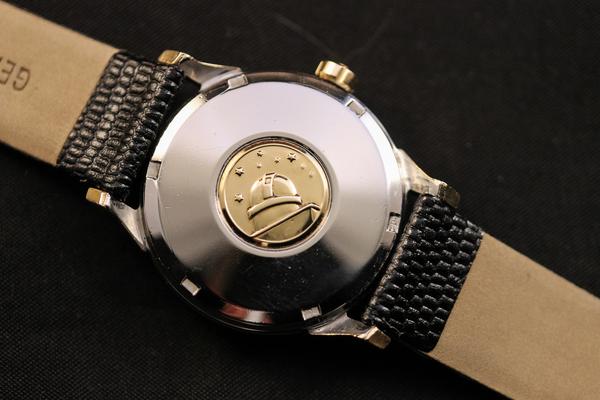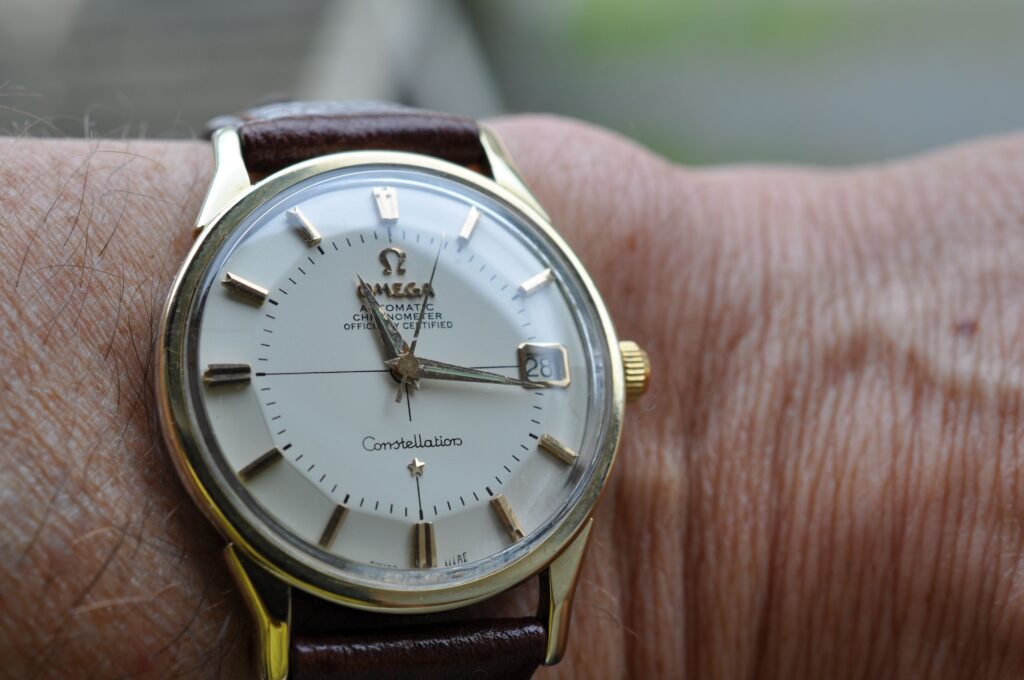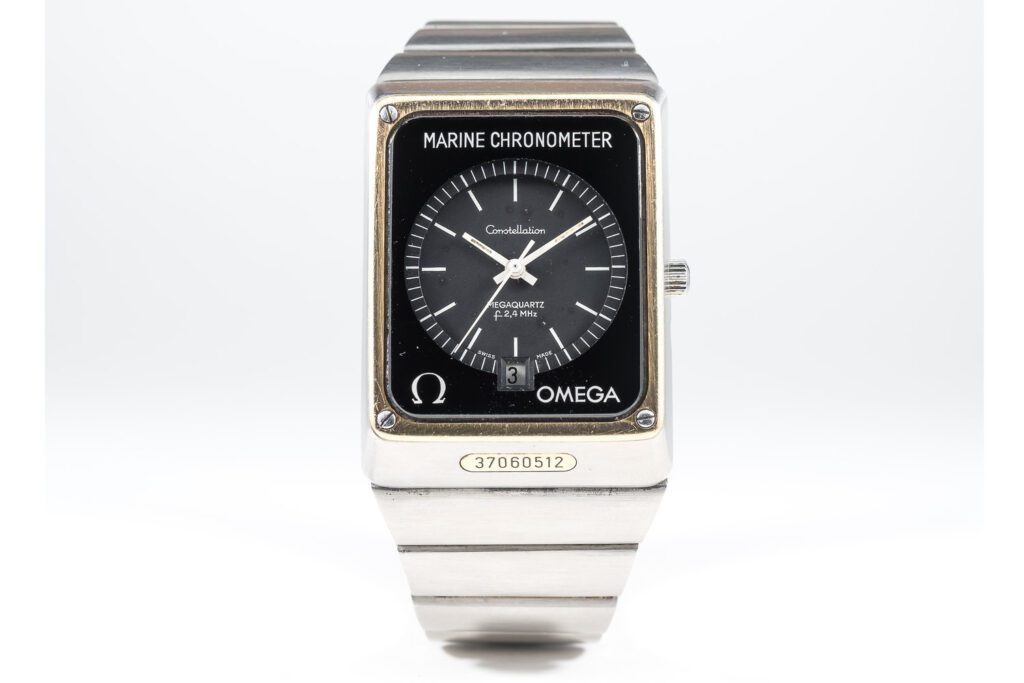A Brief History of the Omega Constellation

Omega is an integral piece of Swiss watchmaking history. Originally begun in 1848, the brand has been present for everything from the Olympics to the first moon landing. While there are plenty of histories to be written about a wide variety of their historical timepieces, we here at Times Ticking have decided to turn our heads up toward the stars (so to speak) in today’s writing. We are of course referencing the Omega Constellation series—as the title would suggest. It is a wristwatch line that has been perpetuated by the company for nearly 70 years. It is a wristwatch line that features Genevese astronomy on its caseback and has been worn by plenty of stars throughout its tenure at Omega.
Current updates have entered the “Gent’s” collection regarding the Omega Constellation for 2020—a subtle set of changes that implies the overall history of its evolution. Indeed, being a flagship wrist watch for the brand from the 1950s-1970s Omega’s Constellation has seen a lot of change and variation during its lifespan. On that note, while both today’s and yesterday’s Constellations deliver a strong appeal, it was originally a different watch line from Omega that inspired this stellar style.
1948
Centenary Chronometer and the Original Constellation

Pre-dating the Constellation by four years was the Omega Centenary. It was released in 1948 as a limited edition—meant to celebrate the 100year anniversary of the company. Omega only released 6,000 of these timepieces but they were a hit chronometer for watch lovers around the world. They were also Omega’s first automatically wound chronometer (a big step for Omega).
The engineering work on the Centenary was well received critically, and was stunning in its looks. Faceted lugs, a domed crystal, gold case, fine metal bracelets, fine leather straps, and a set of gold dauphine hands all left a lasting impression on fans of the Centenary. It was a natural fit for Omega, after the short-lived success of the Centenary, to retain a similar chronometer standard and aesthetic for their Constellation series. Centenary was in-demand after its release and Omega answered the call with continued excellence. Omega’s first Constellation was born in 1952.
The
1952 Release: What’s In a Name?

Omega’s Constellation got its name from a unique source. While its name implies extra-terrestrial bodies, its namesake was derived from the Lockheed Constellation (“Connie”)—an airliner from WWII. Keeping the dauphine hands on the Constellation’s dial was a clever (albeit unintentional) pun/nod to the dolphin-shaped fuselage of the Lockheed Constellation. Retaining an aviation allure, the automatic chronometer aspect of the Omega Constellation would come to be coveted by flight-affiliated watch wearers from all over. In that vein—after its initial release—the Constellation would take to land, sky, and sea quite well for its wearers (as a performance watch). On a further naming note, its 1952 release was debuted in America as the “Globemaster”—that name was eventually switched to “Constellation” on the U.S. market in 1956.
Quality
Written in the Stars

Another key aspect in naming the Constellation, of course, is the Geneva Observatory stamped onto the backs of each piece (a tradition that continues to this day). The observatory’s presence on the back of the 1952 Constellations was meant to imply the scientific accuracy of their Caliber 35X bumper-driven movements. Beyond accuracy, each Constellation went through rigorous physical testing against the elements before being released to the public.
Before counterweights were a part of Omega’s automatic chronometers, bumper movements were a forward-thinking milestone for the brand. Alongside this reality, the cases housing them allowed for a performance wear that was wonderfully versatile. Come 1955 the Caliber 35X movements were replaced by the Caliber 50x bumper movement.
Case
Designs and Movement Updates

As automatic movements and aesthetics evolved among the watch community, so did the Omega Constellation series. The 1950s Constellations used bumper movements (a bit jarring), but by the 1960s would utilize rotor-driven automatic movements. At the dawn of the 1970s, Omega experimented with applying a highly accurate MegaQuartz movement in their constellation series—a movement that would garner high industry praise. In terms of chronometer timekeeping, the 1950s-1970s are lauded as a heyday of innovation regarding the Omega Constellation.
Visual designs from this time period tend to be met with high praise from watchmakers and collectors alike. Changes between round and rectangular cases in the overall design became a hallmark of Omega’s experimentation with the Constellation. Omega created a lot of unique models as a result of bold steps in visual design—but there was a particular run in the 1960s that’s worth noting. The Constellation Deluxe, Constellation Deluxe II Calendar, and Constellation Grande Lux all captured the overall visual flow of the Constellation both before and after their release. Faceted dial markers, angular elegance on the lugs, the use of onyx-infused gold, and cross-hairs on the dial made them a popular choice—even for the likes of Elvis Presley.
The 70s
and 80s Lead to the Future

As mentioned previously, Omega began using quartz movements in their Constellation series by the 1970s. While many watch aficionados believe this was the death-knell of the Constellation’s more impactful time in watchmaking, it also acts as an example of an unavoidable shift in watch technology during that time (the Quartz Crisis/Revolution). Omega, in order to stay competitive with Japan, made Constellation models with both quartz and mechanical movements from the 1970s onward.
Transitioning from the 70s into the 80s Omega released the “Manhattan” series Constellations (in 1982). From 1982 to the day of this writing, Omega still uses the Manhattan style to inform the design of the Constellation series. While design variations and updates continue to evolve—mostly in the movements—the Constellation has remained largely the same for close to 40 years. This has led to some ho-hum feelings toward this once-flagship model of Omegas, among watch enthusiasts.
Swatch
Out for Omega Constellation Updates
Today’s Omega is currently owned by the greater Swatch watch group. Under this umbrella Omega’s Constellation series has still not seen any radical changes. However, the name “Globemaster” has been reintroduced recently to the Constellation universe—denoting an interest in the Omega Constellation’s past from both Omega and its parent company. Perhaps we’ll see a renaissance in the upcoming decade regarding this wristwatch classic. Until then, we’ll continue to enjoy Constellations both old and new—looking toward a future that’s (perhaps) written in the stars.
Times Ticking has been in operation for more than 30 years, since 1982. We have performed watch repair for customers both locally and internationally. If it Ticks! We KNOW it! Our team of watch repair technicians have a combined experience in watchmaking of over 120 years.

